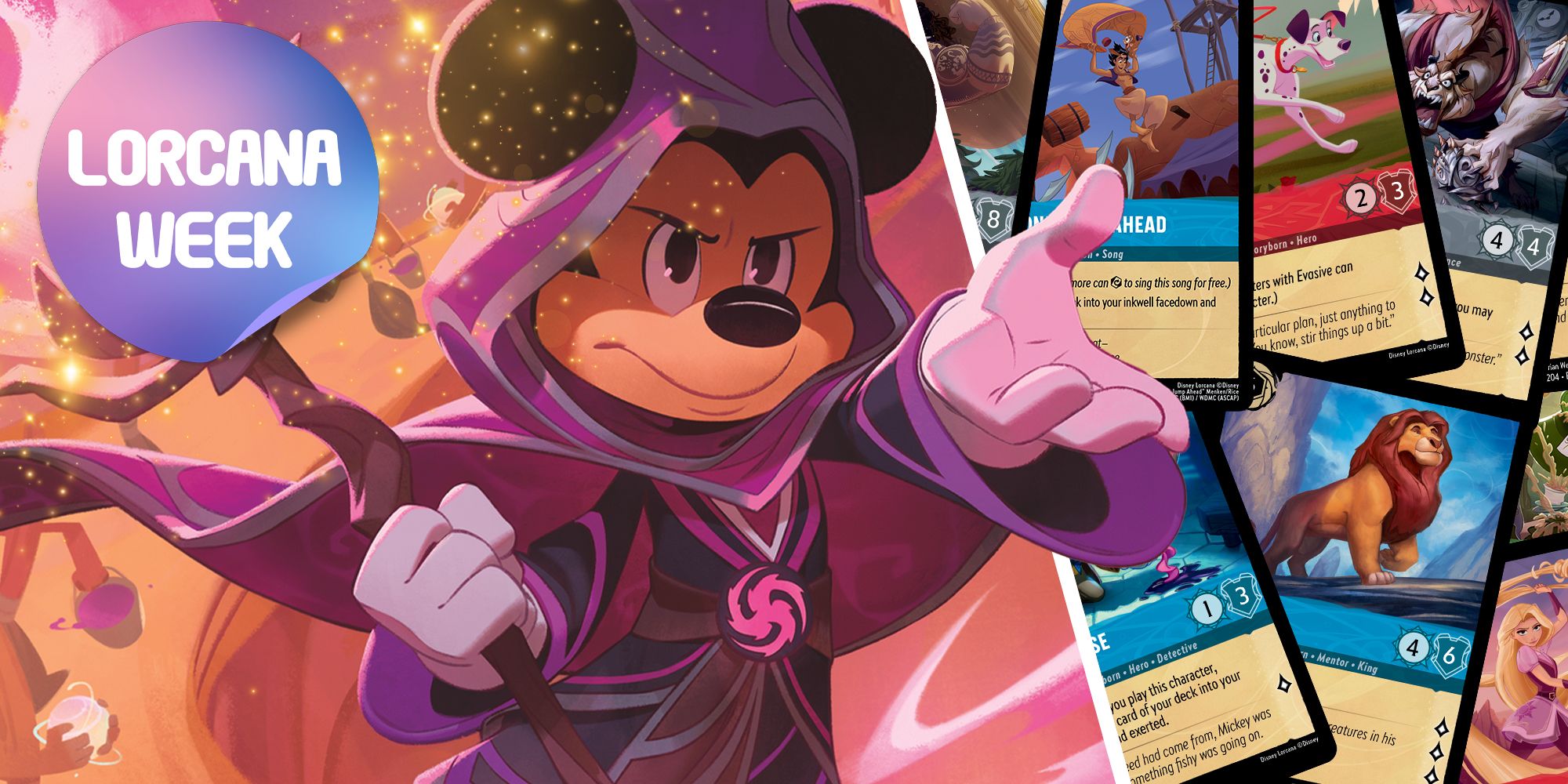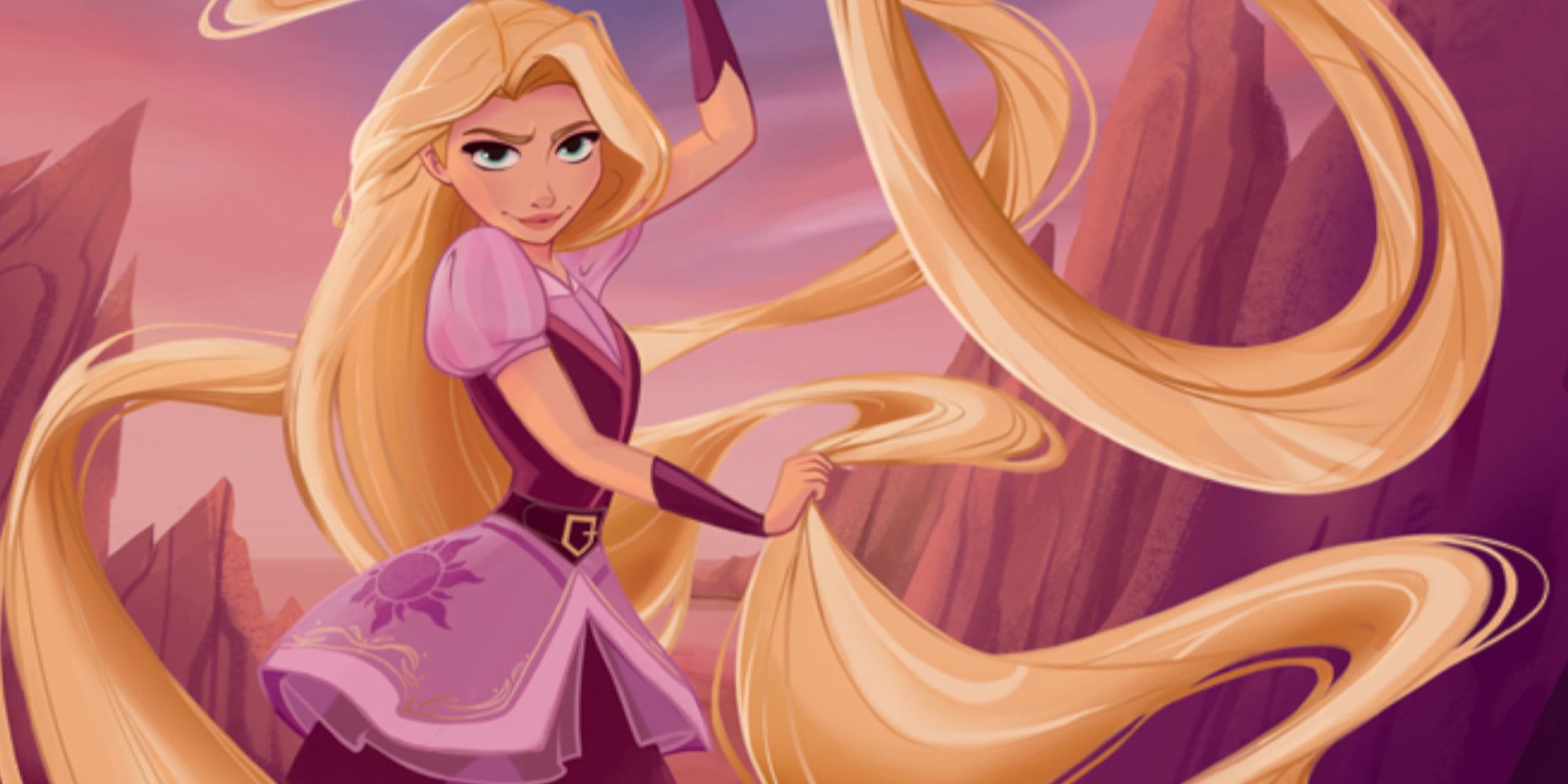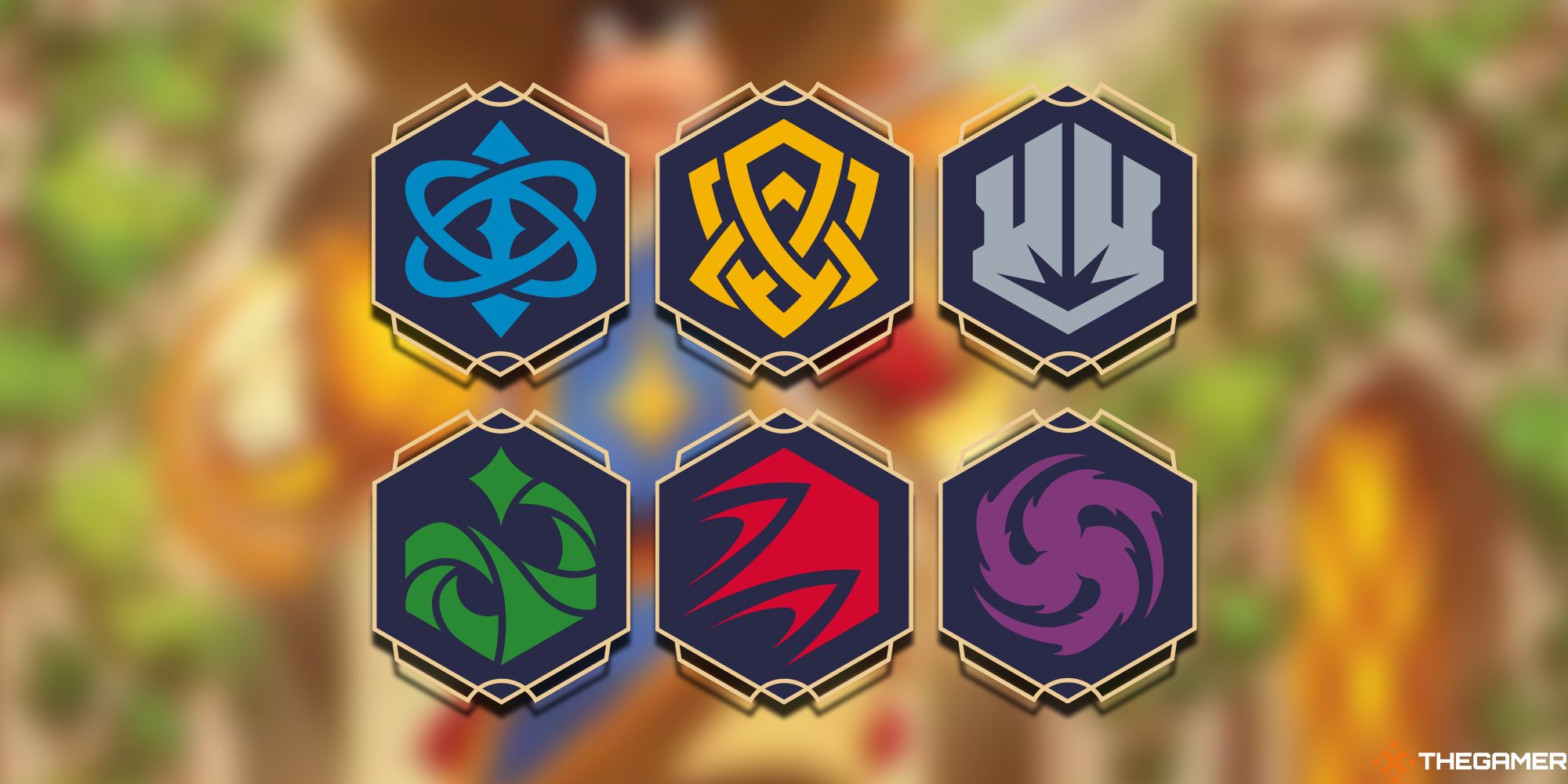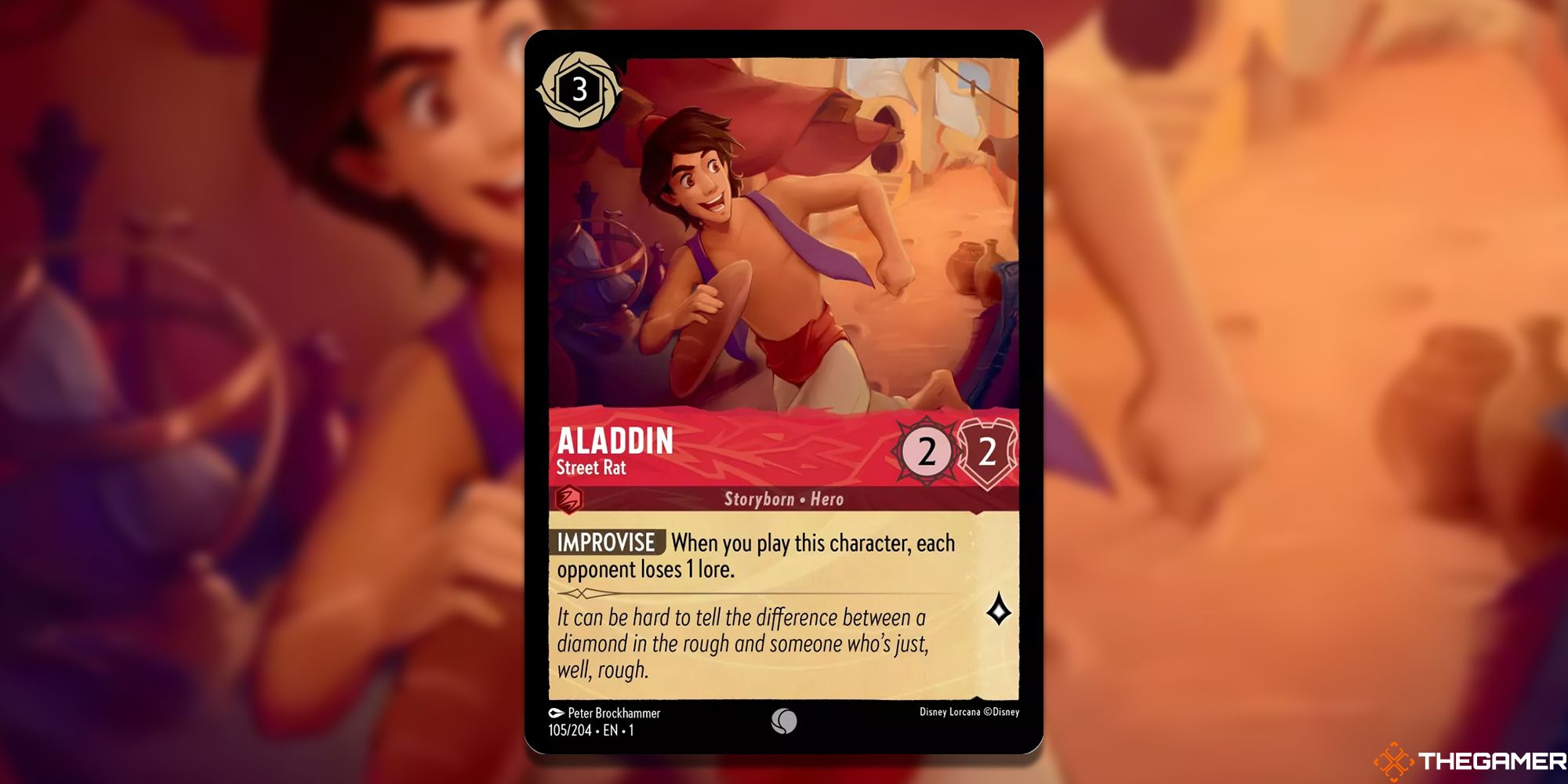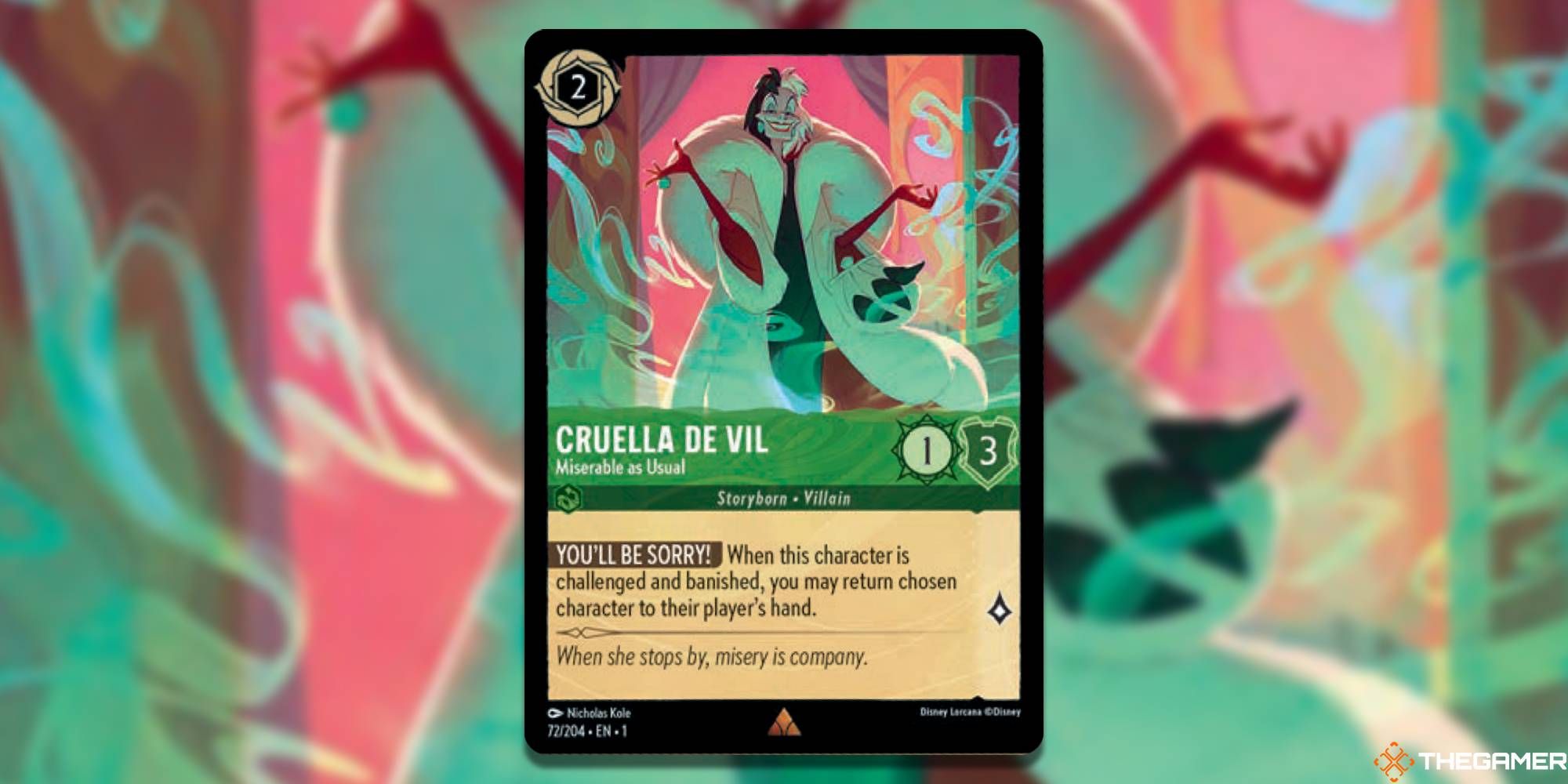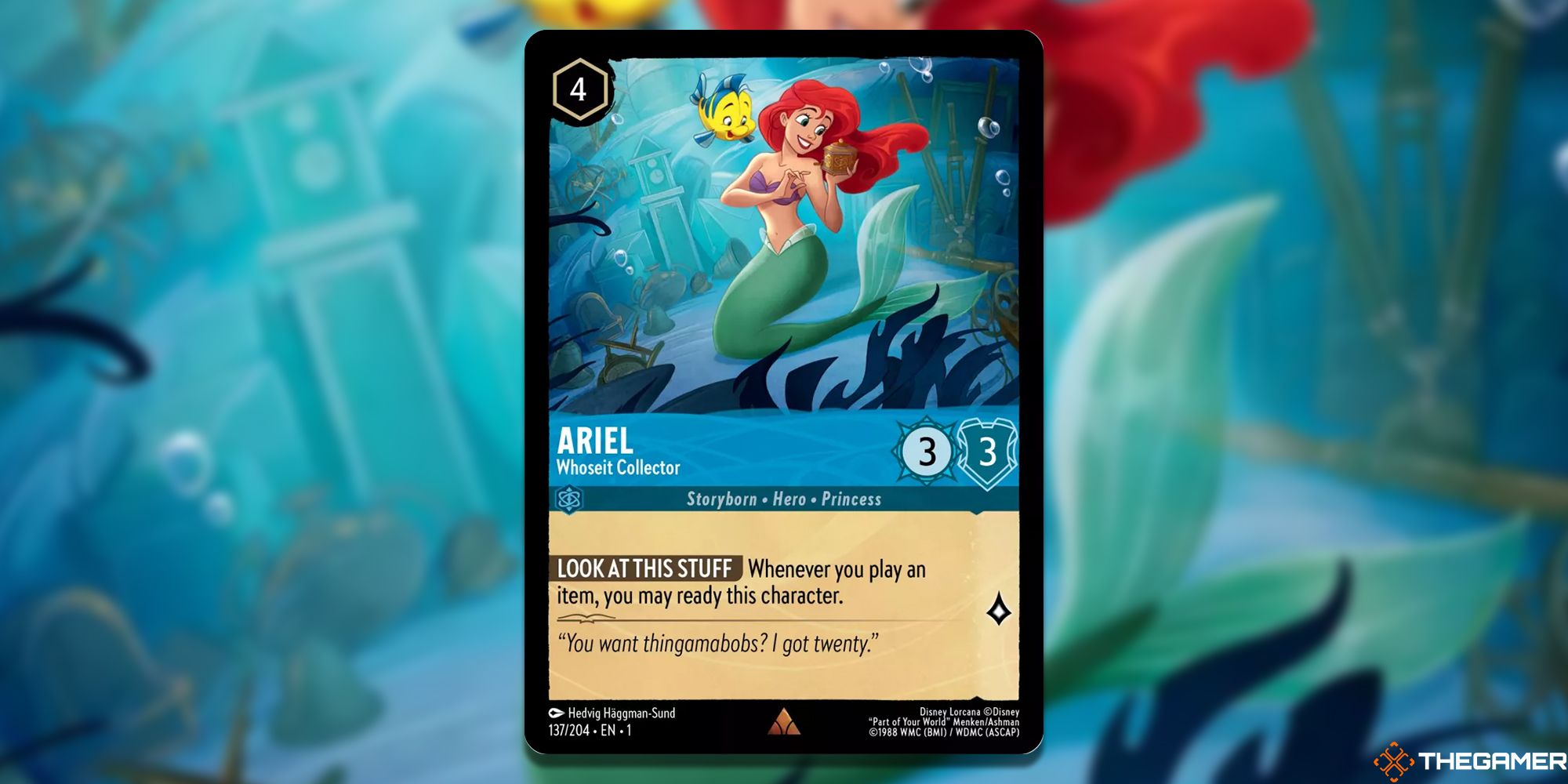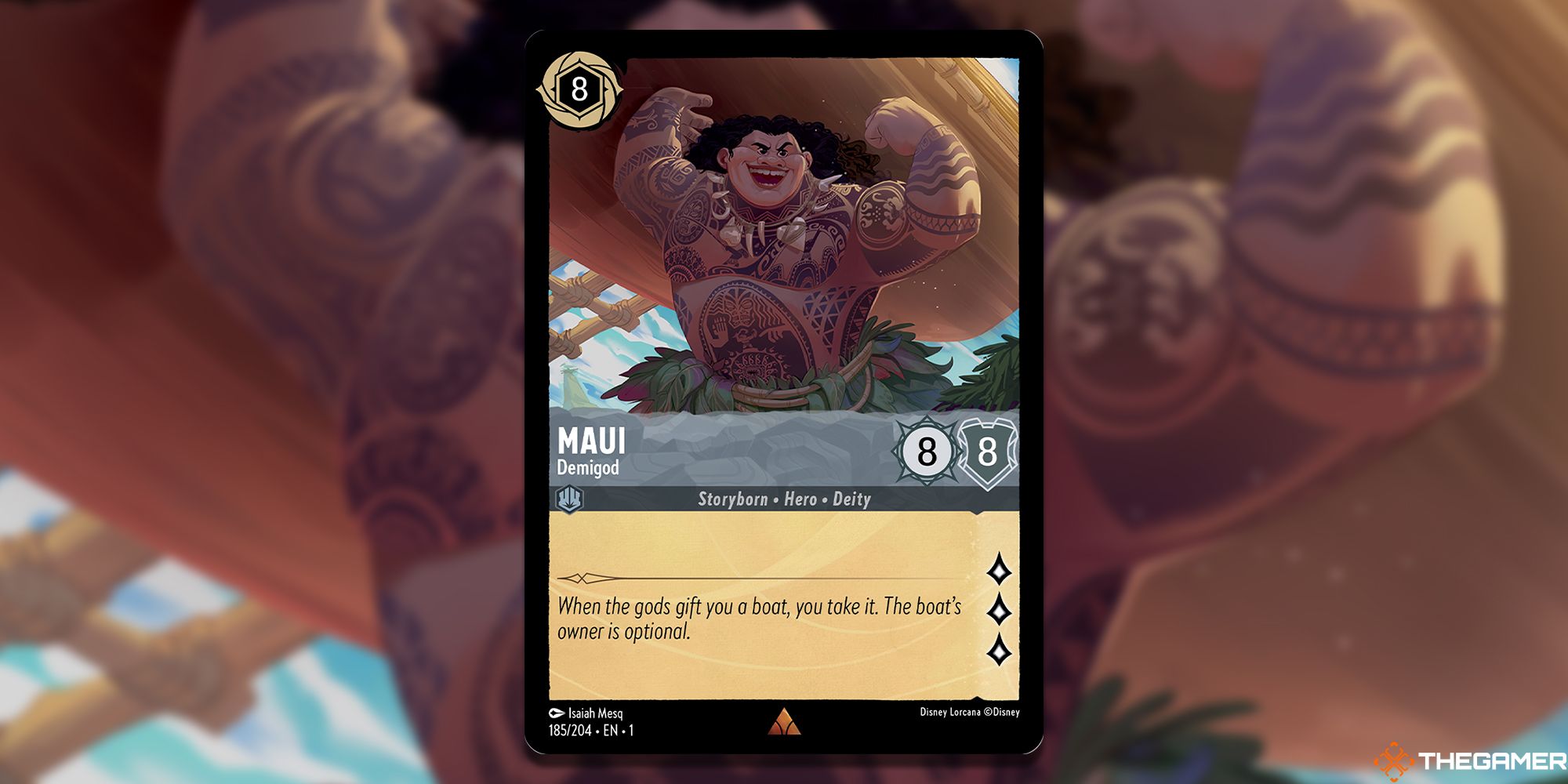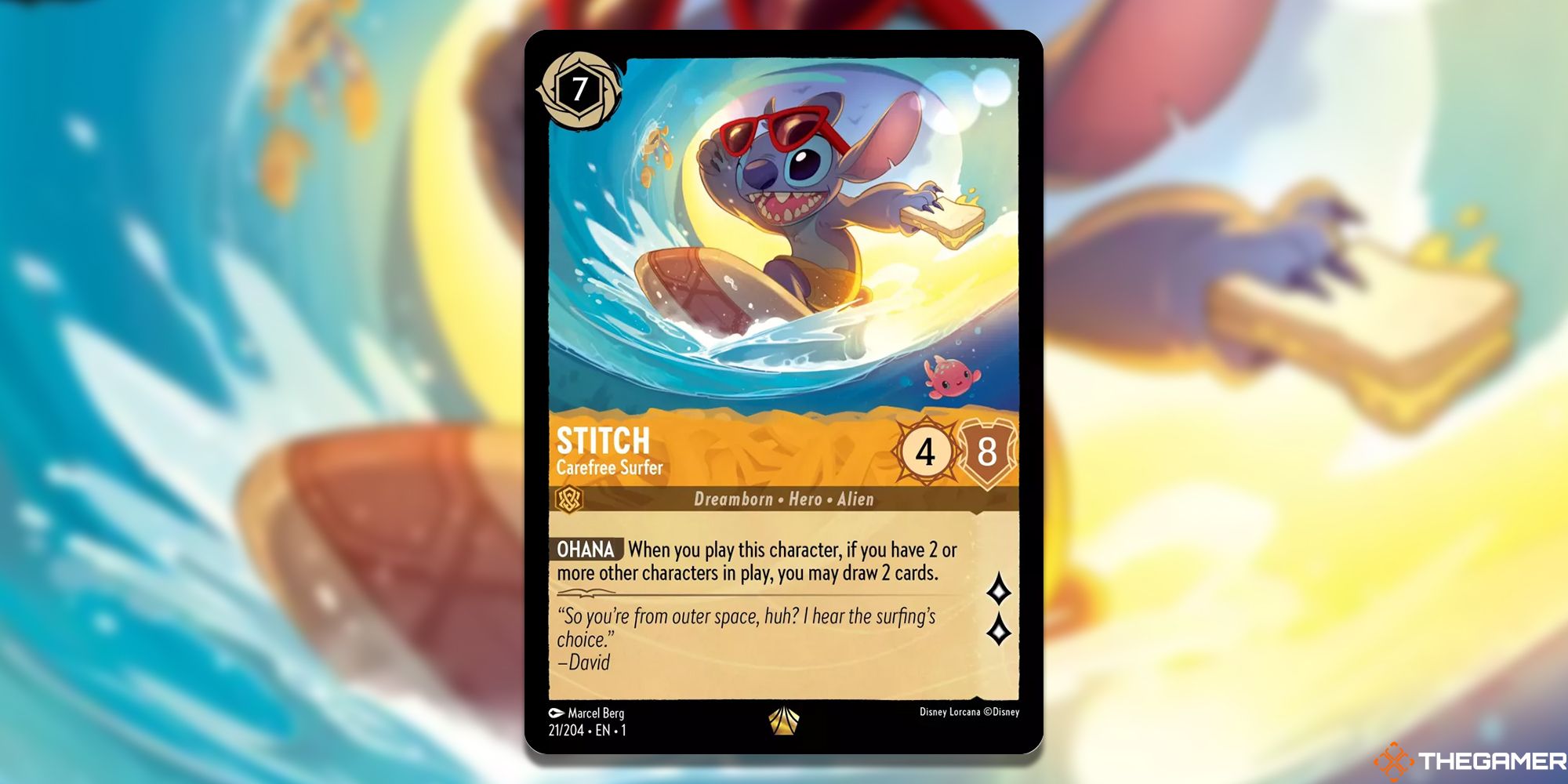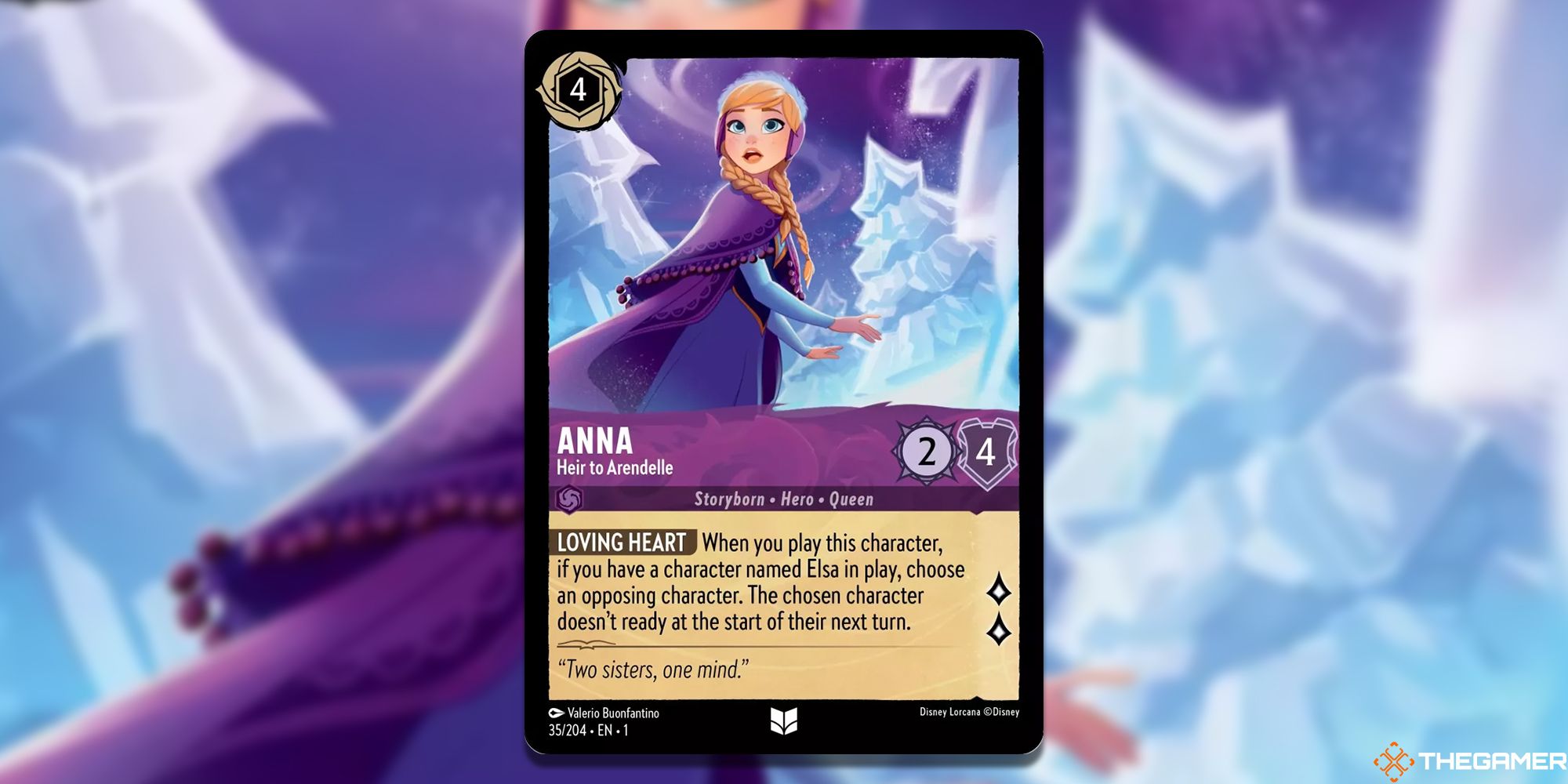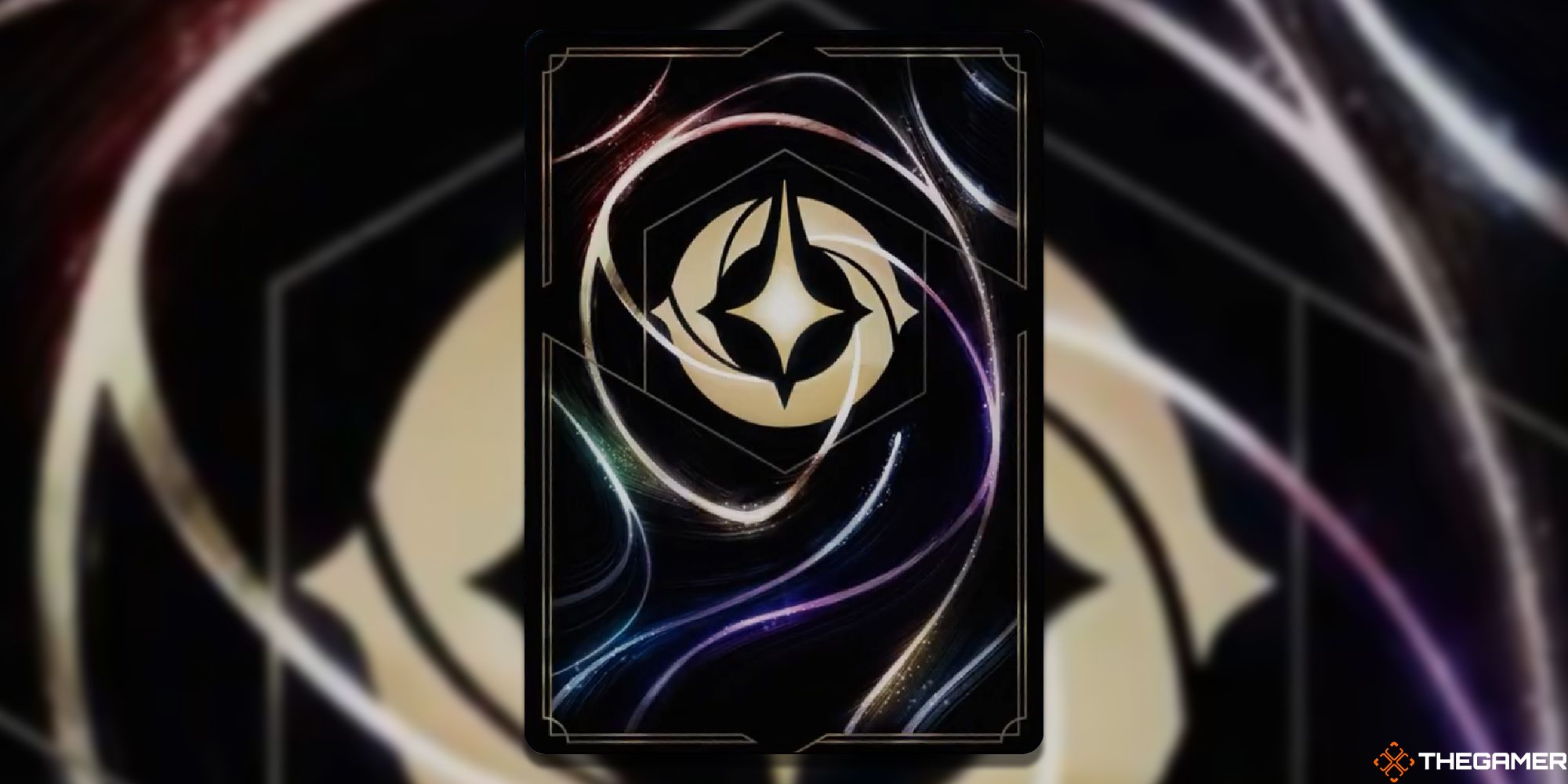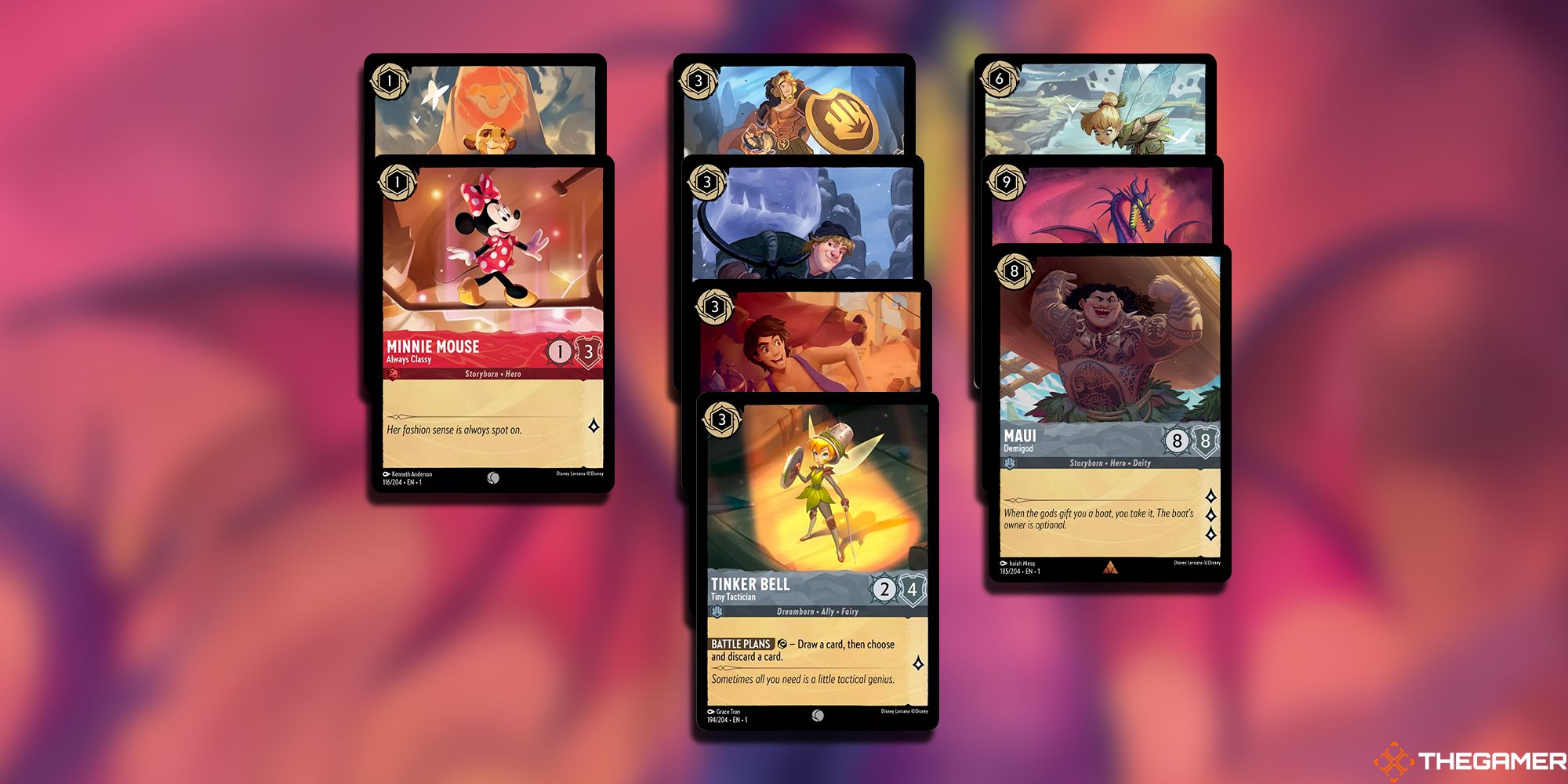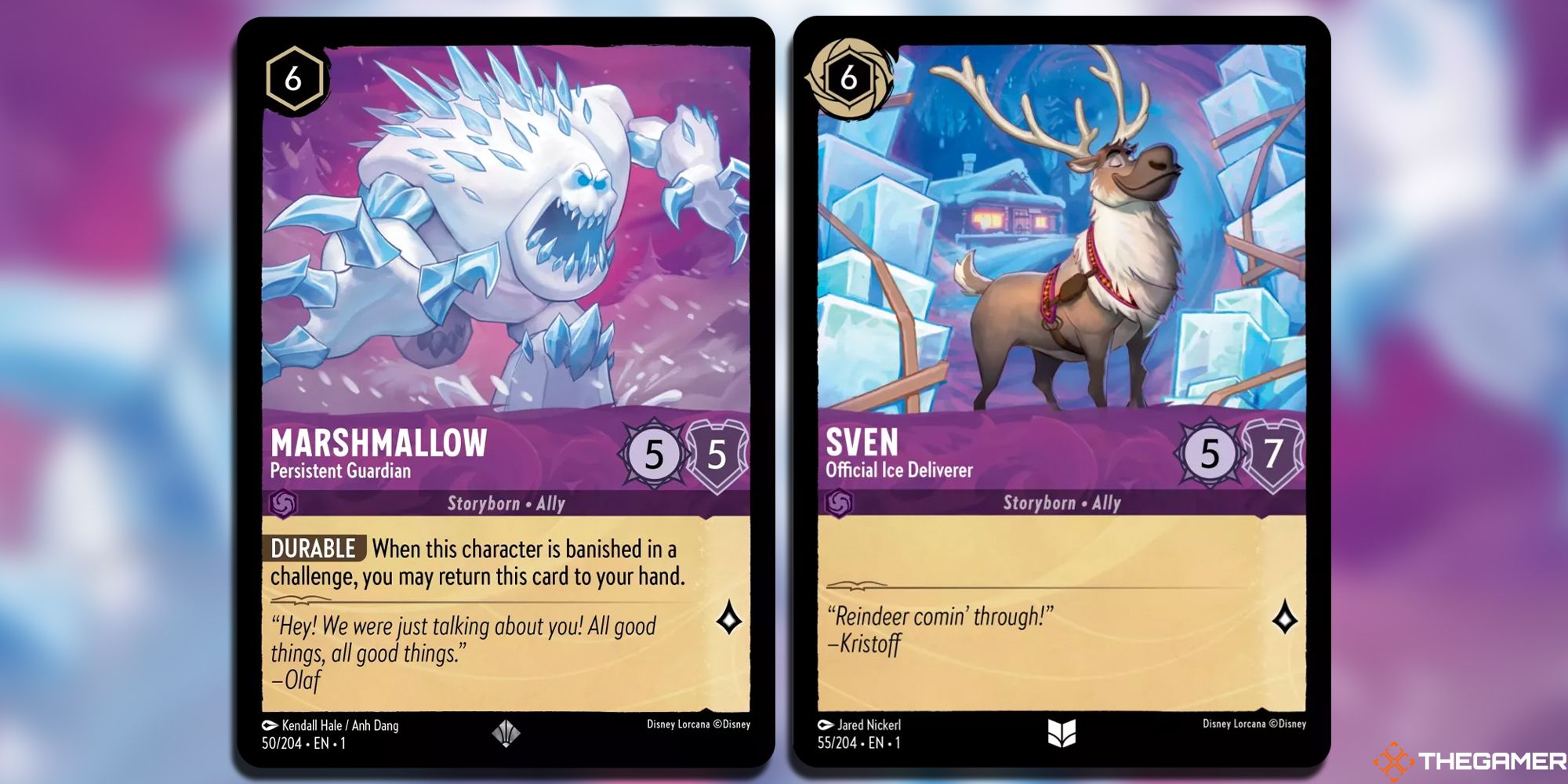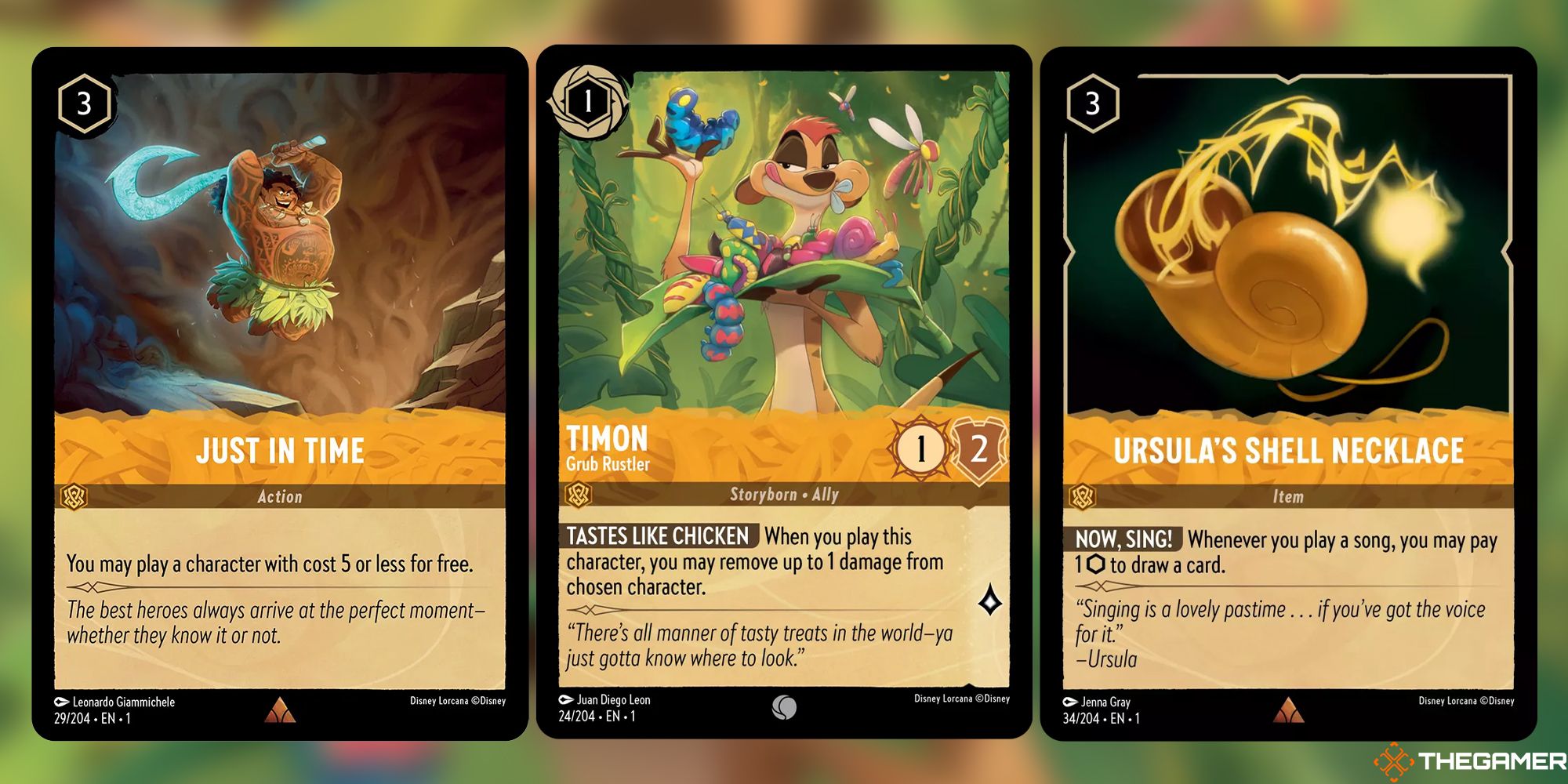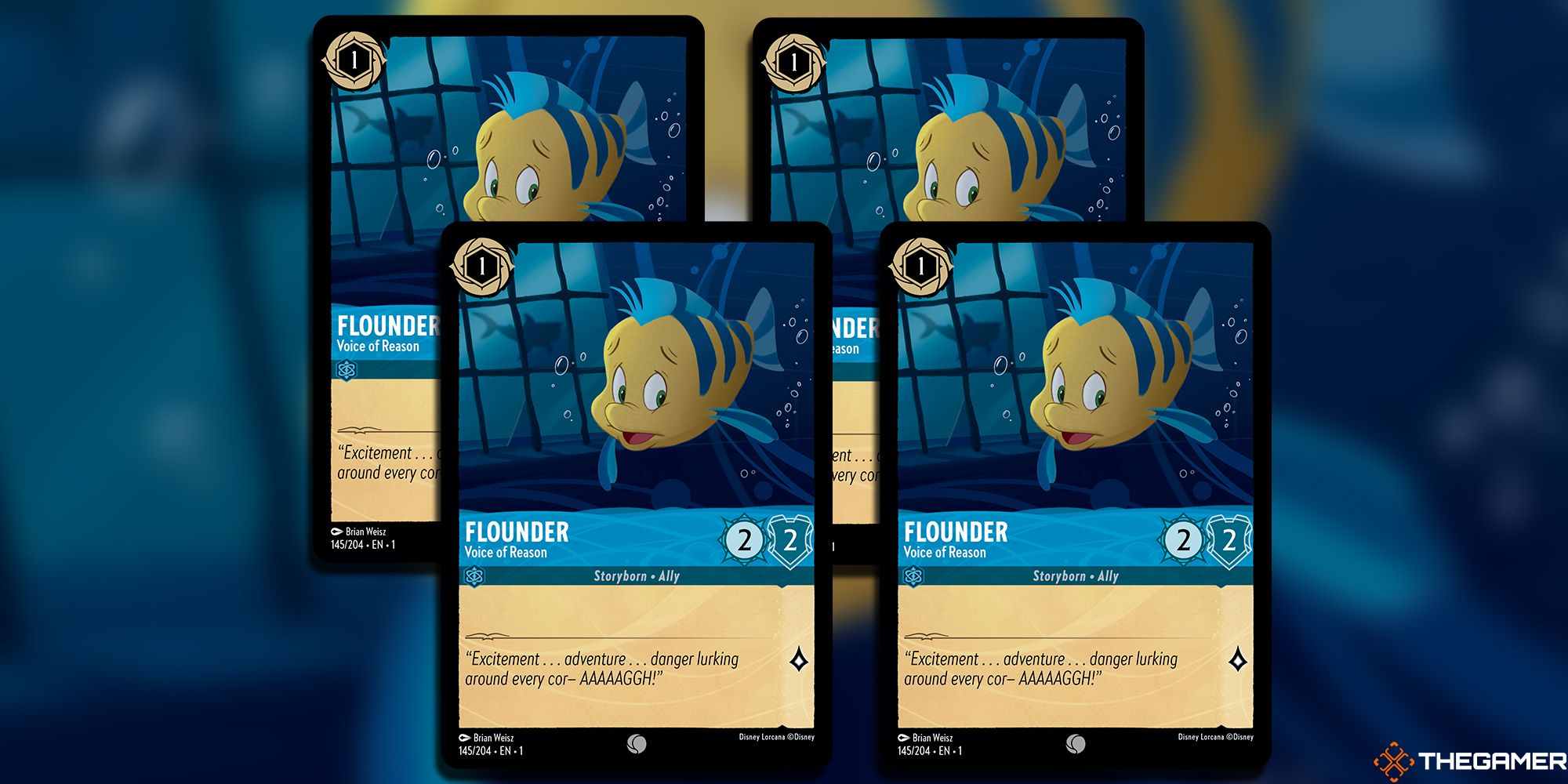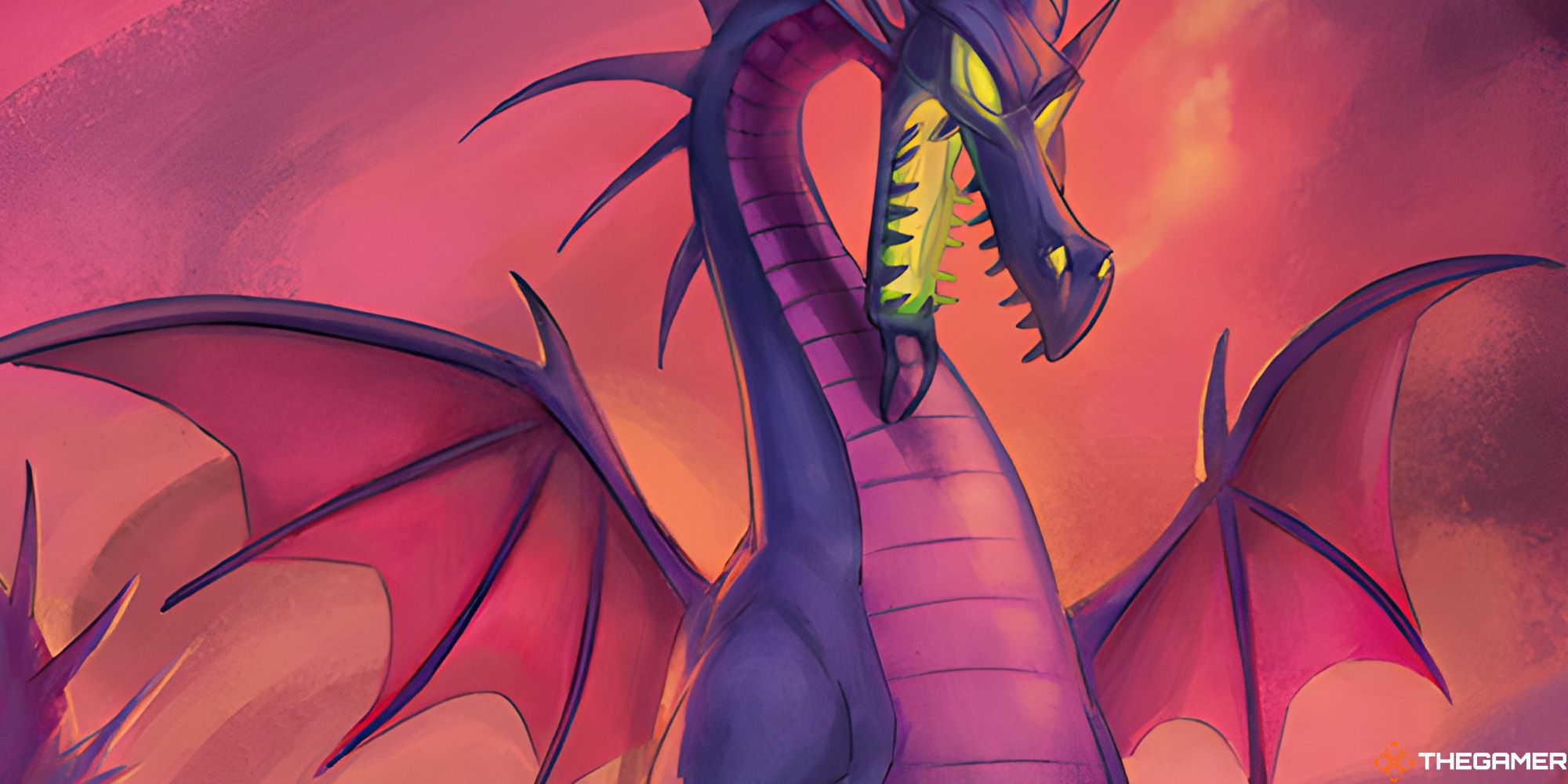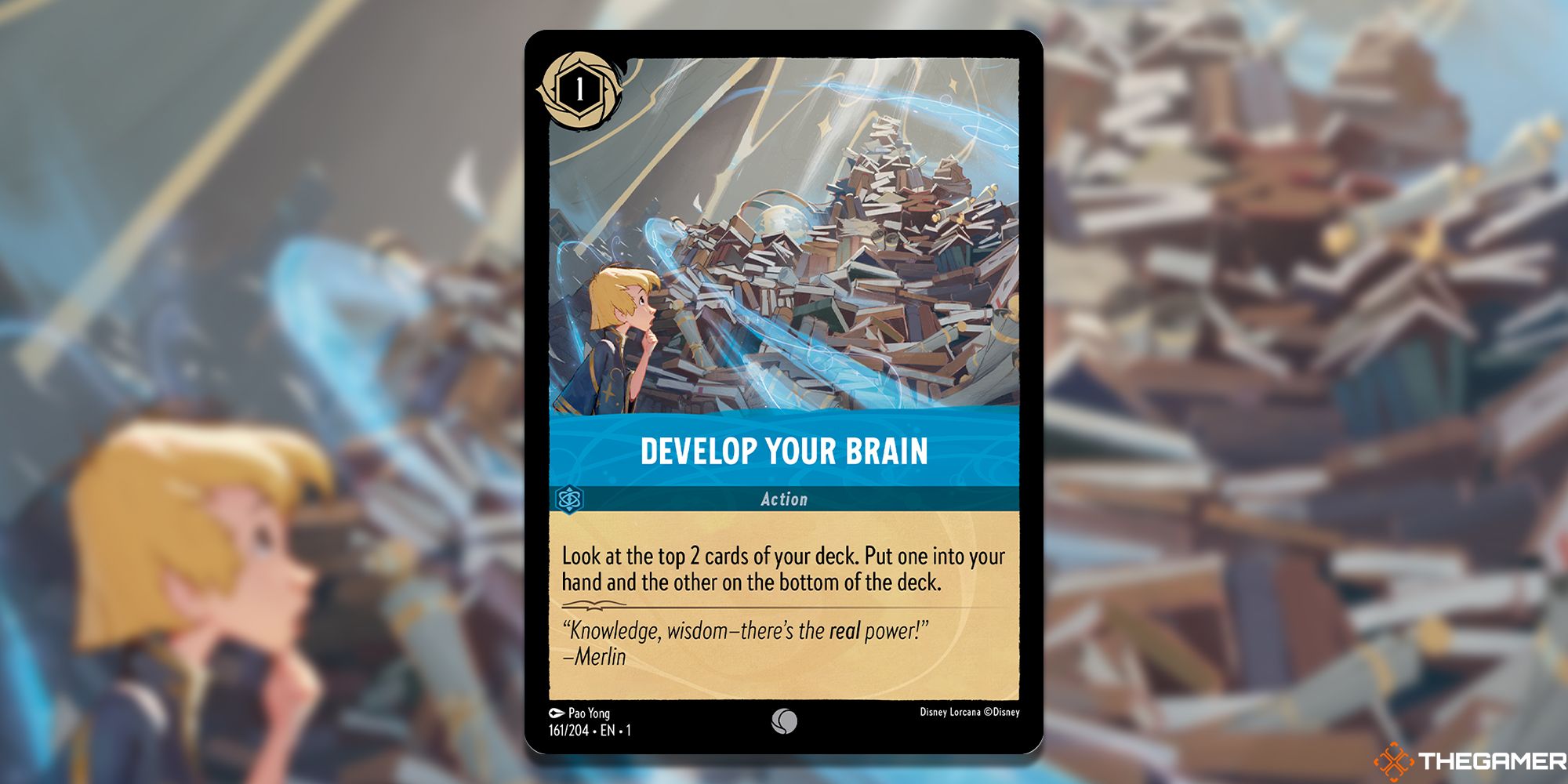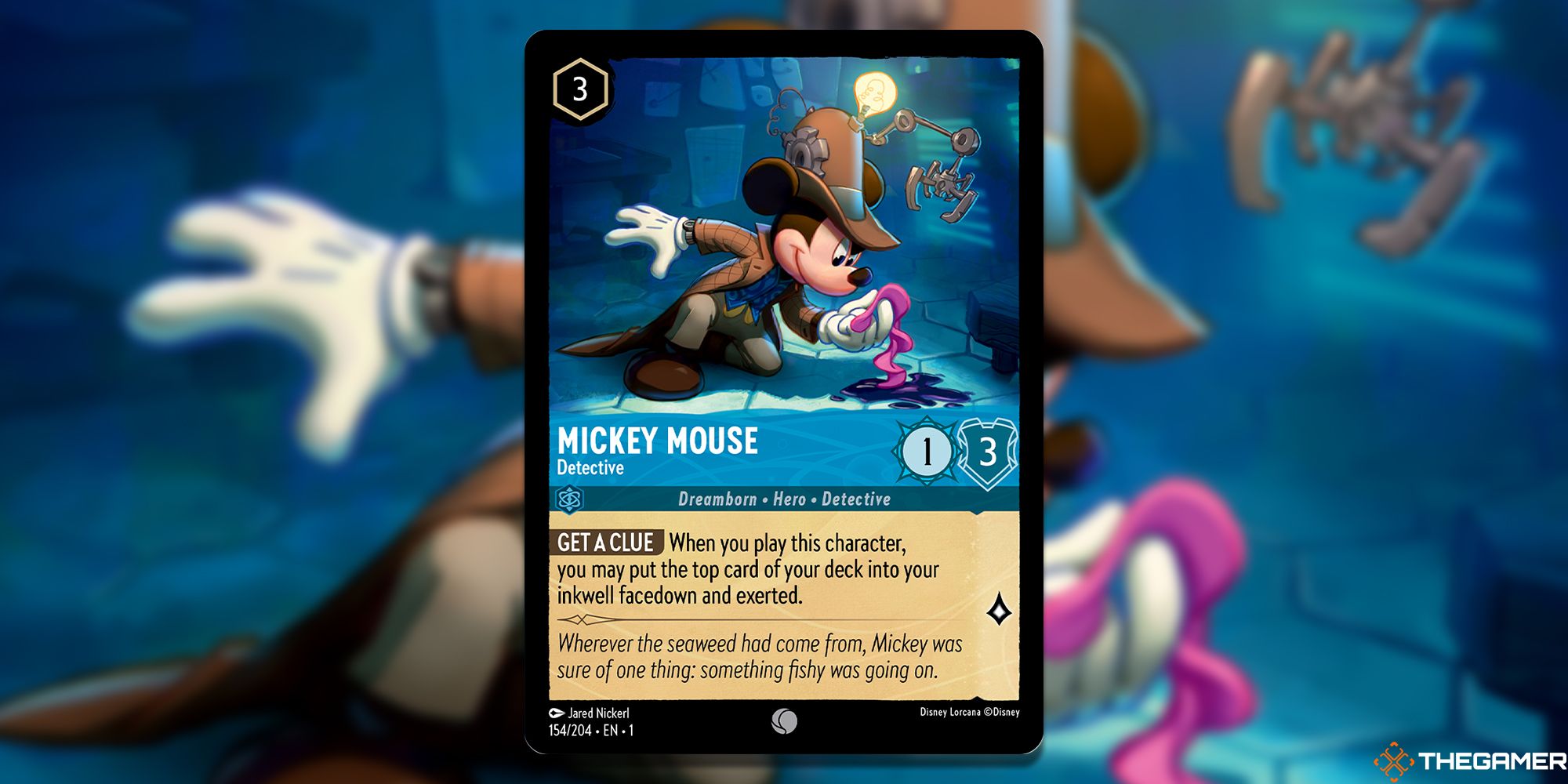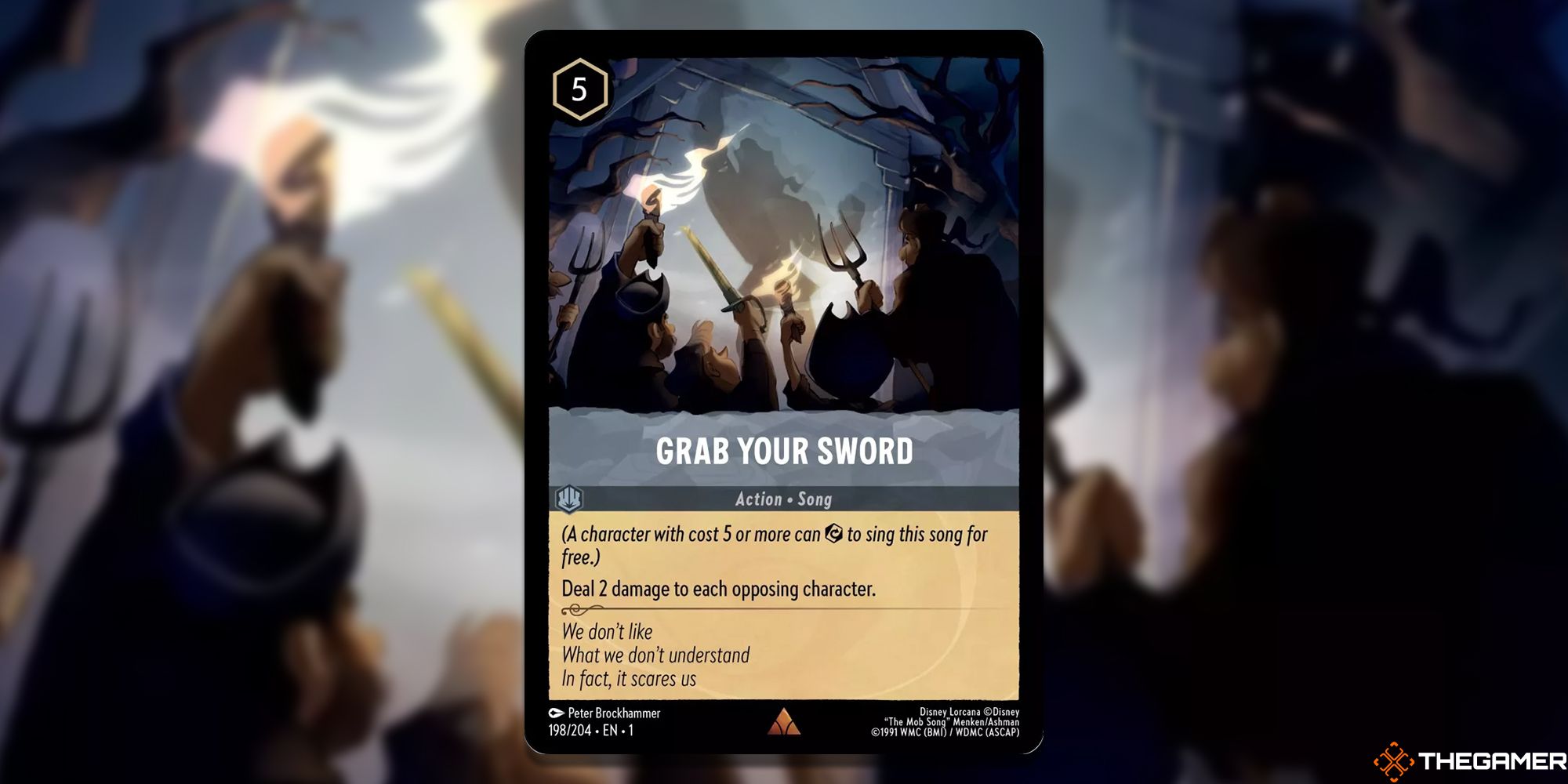Quick Links
Disney Lorcana lets you play with your favourite Disney characters, songs, and thingamabobs, but before you can shuffle up and crank up that lore, you’ll need to get your hands on a deck. While you could play with one of the three Starter Decks, there’s nothing more satisfying than brewing your very own deck, unique to you.
Deckbuilding can be daunting task, though, even for veteran TCG players. How do you decide on your deck’s inks? What on earth is an ink curve? And what’s the point of uninkable cards?
The Basics
In Lorcana, you make a deck of at least 60 cards. You can have more, but you need to be able to reasonably shuffle your deck unaided.
While the temptation would be to just put all the cards you think are good in one, big deck, it’s generally advisable to not go over 60 cards. The smaller your deck is, the more consistently you’ll draw the pieces you need, and the stronger the deck will be as a result.
In your deck, you can have up to four copies of any single card. This refers to both the name and the title of the card, meaning that while you can have four Stitch, Carefree Surfer and four Stith, Rock Star in the same deck, you can’t have five of either of them.
The final rule is that your deck can’t use more than two of the six inks. This will usually drive you into making a two-ink deck for a larger card pool and versatility, but you could also go for a purely single-ink deck if wanted.
Choosing Your Inks
The first thing you’ll need to do when building a Lorcana deck is pick which inks you want to build around. As mentioned, you can only use two of the six in your deck, and each has their own strategies and mechanics.
Picking an ink can be as complex as determining which strategy you want to employ, or as easy as picking a Character card you like and wanting to build around it. There are no objectively best inks in Lorcana, with each taking advantage of different weaknesses the other inks have. Part of the deckbuilding process is pushing the advantages of your inks, while also trying to shore up their weaknesses.
Ruby
Ruby is an aggressive ink focused on draining lore, banishing your opponent’s characters, and questing fast for large amounts with efficiently costed characters of your own. It’s one of the more direct inks, as it tries to out-pace your opponent by going straight for their lore total, rather than some of the tricky manoeuvres other inks can make.
Emerald
Emerald is all about adaptability and avoiding challenges, and can use its abilities to move cards around as and when it needs it. Emerald is great at yanking cards out of your discard pile, forcibly exerting your opponents, or using characters with Evasive and Ward to take the heat off your main questers.
Emerald isn’t the fastest of inks, and is arguably the least well-defined, but if it can stay in play long enough it can become a big threat.
Sapphire
Sapphire loves item cards. Many of its Characters work in tandem with you playing lots of items, whether that be reducing their cost, pulling them out of your discard pile, or letting you draw cards when you do. This is also the ink of hand advantage, with even more ways to draw cards and filter your deck for the pieces you actually want.
Steel
Like Amber, Steel is a challenge-focused ink. However, instead of aiming to rush your opponent out, Steel is happy to take its time and systematically knock out targets through lots of challenges, complete with numerous buffs to Steel Characters’ naturally high stats.
It can also be hard for your opponent to overcome your wall of defence as you tick up your own lore safe and sound. Its cards can be a bit more expensive than others, but in exchange you get some of the biggest Characters in the game, like the whopping 8/8 Maui, Demigod.
Amber
Amber is the go-wide ink, with Characters that synergise with each other and effects that either allow you to play more Characters or protect the ones you already have. It’s also got an emphasis on Song cards, letting you use your Characters to play Songs for free.
Amethyst
The ink most focused on control, Amethyst can do everything from filtering the top card of your deck until you find something powerful to play, locking down your opponent’s Characters to stop them questing, and pull cards out of your discard pile.
It shares similarities with Emerald, but the primary difference is that, where Emerald seeks to react and adapt to what your opponent does, Amethyst seeks to prevent your opponent from acting at all.
Your Ink Curve
Now that you’ve decided your inks, your next job is to think about the ink curve of your deck. While you can just run all the biggest, baddest cards together, doing so would generally mean your opponent plays more efficiently and defeats you before you even get the ink together to play one of your heavy hitters.
Instead, you want to balance two things:
- To cost of your cards.
- The inkability of your cards.
Managing Your Ink Costs
Fortunately, Lorcana allows you to use almost any card in your hand as a resource by putting it face-down in your inkwell. This prevents the common TCG problem of being strapped for resources when you need it, but it also means you have to be careful about the cost
When constructing your deck, try and make the cost of your cards look like a bell curve. You don’t want too many high-cost or low-cost cards, otherwise you’ll either have nothing to play for the first few turns or not be able to keep up after them.
Instead, the bulk of your deck should be somewhere in the middle. Three- and four-ink cards should make up a decent amount of your deck, to ensure you can play multiple cards per turn that are still impactful enough to stand up to whatever your opponent throws out.
The specific curve of your deck will depend on a lot of things, such as how ‘low to the ground’ it is (how many cheap cards are part of your primary strategy), and how much ramp you have (cards that can put more ink into your inkwell, like Mickey Mouse, Detective. Despite that, your goal is to still have more cards between the two extremes of your cost.
Card Inkability
Not every card can be put into your inkwell. Those that lack the large circle around their cost cannot be ‘inked’, making them useless if you don’t have the resources to play them.
This drawback is often offset by the card being more powerful than one that could be inked. For instance, Ariel, Whoseit Collector’s ability to unexert whenever an Item is played is much more powerful than Merlin, Self-Appointed Mentor’s Support keyword, despite both costing four ink, questing for one lore, and being Sapphire cards.
Non-inkable cards often are the cards you should build your deck around. If you run Ariel, Whoseit Collector, you’re likely going to want to use lots of Item cards to go with it. Flotsam, Ursula’s Spy pushes you to also run Jetsam. Grab Your Sword is an incredible board wipe.
They are the big plays of your deck that you’re aiming to build up to, but they shouldn’t be a large part of your deck. Run too many and you’ll end up not drawing cards you can ink.
The sweet spot for them is somewhere between six and eight non-inkable cards for a 60-card deck. This maximises your chances of drawing a great card when you need it and can afford it, without it also sitting dead in your hand for a whole game.
Balancing Characters, Items, And Actions
Unless you’re playing a hyper-focused combo deck, such as using Ariel and a ton of items, you’ll generally want Characters to be the most prevalent card type in your deck. Characters serve both as your defence against your opponent, and also your primary way to generate lore yourself.
Defining a specific ratio of the three card types is difficult, but a good place to start is having Characters be roughly two-thirds of your deck. This gives you ample room to add supporting Items and Actions, while also ensuring you do draw some of the Characters you actually need.
This also depends on what inks you’re playing. Amber and Ruby thrive on having Creatures to quickly replace whatever your opponent removes, and so you might skew more than this ratio. Meanwhile, Sapphire likes to have more Items at its disposal instead, and so you may have fewer Creatures to make room.
Regardless of your ratio, it is important you use all three. It is tempting to just smash Characters in there and rush the lore out, but without interaction with your opponent or a way to buff your own forces, you’ll be at a severe disadvantage.
Running Multiple Copies Of A Card
You can run up to four copies of the same card in your deck. It is easy for a newcomer to decide they want to just put four copies of everything they want to add in a deck, but that paradoxically reduces the consistency of your deck.
Instead, you want to double, triple, or quadruple up on cards depending on how frequently you need to draw that card.
This is a very rough outline for your deck. Depending on its needs, you might find running more or fewer copies of a specific card works better for your deck.
- Four copies should only be used for the essentials that you want in your opening hand. Low-cost cards that can be inked are a good choice for this, to ensure you have a turn-one play.
- Cards you want to draw every single game, but not necessarily straight away, should get three copies. This will likely be your win conditions, combo pieces, or those big bomb cards you’ve built the deck around.
- Two- and one-of copies of cards should be for the situational pieces. Ones that you won’t use every game, but will get you out of trouble in a pinch. If your deck relies on these cards to function, you need to run more of them.
Draw, Ramp, And Removal
Your deck is likely going to be built around a handful of cards, like a Steel deck focused on using Maui, Demigod for big damage, or a more general strategy, like Princesses or Brooms. Though these themes are what make your Lorcana deck unique, you still need a few crucial tools to keep your deck’s engine running.
Card Draw
You absolutely should not rely on the one card you draw every turn. If you draw a dud card, you’re effectively one turn behind your opponent, and with ink being played out of your hand as well, you’ll quickly find yourself running out of options.
Make sure you’re running plenty of cards that allow you to draw something else. These could be straight draw cards, like Friends On The Other Side or Maleficent, Sorceress. However, they could also be more tied into the theme of your deck, like an Amber Song-heavy deck making use of Ursula’s Shell Necklace.
For a 60-card deck, you’ll be wanting to run at least ten draw cards.
Ramp
Borrowing a term from Magic: The Gathering, ‘ramp’ is gaining more resources than the one ink you play from your hand each turn.
Anything that lets you get more ink into your inkwell can be considered ramp. This is much rarer than card draw, but there are still some great cards for it, especially in Sapphire, like Mickey Mouse, Detective; Let It Go, and One Step Ahead.
In other inks, you may have to be a bit more flexible on your definition of ‘ramp’. Cards that can reduce other costs can still count as ramp, as the whole point is to be able to play more cards than your opponent, and so, in a pinch, cards like Lantern or Belle, Inventive Engineer could be just what you need to keep your dukes up.
How much ramp you run in your deck depends on its ink curve. If your curve runs closer to the lower end of the scale, you can get away with running fewer ramp pieces. However, if you’re running more expensive or mid-cost cards, you’ll also need more ramp to accommodate.
This is especially true if your average ink value is three or more, because, assuming you only play one card and ink one card each turn, with you’ll get to six ink before completely depleting your hand.
Removal
The final foundation of your deck is its removal, or how effectively it can get your opponent’s Characters and Items out of play.
Every ink needs removal, but some are better than others. Steel, for instance, is excellent at removing Characters through challenges thanks to its beefy stats, but still has other means like Grab Your Swords for when things get a bit hairy. Meanwhile, Amethyst and Ruby are better at a more direct approach, getting rid of cards through Actions or abilities.
Removal is the emergency button of your deck. It knocks your opponent back and gives you breathing room, so make sure you’re running plenty of it. Again, exactly how much of it you run depends on the speed of your deck.
If you’re playing an aggressive deck that wants to win as quickly as possible, you may go with fewer pieces of removal. After all, your goal is to win before your opponent gets any problematic cards in play anyway. However, if you’re playing one that’s meant to hold out a bit longer and gradually build a board state (known as a midrange deck), or one that seeks to just outlast your opponent’s plan (a control deck), you’ll want removal to make up a much larger part of your deck.

